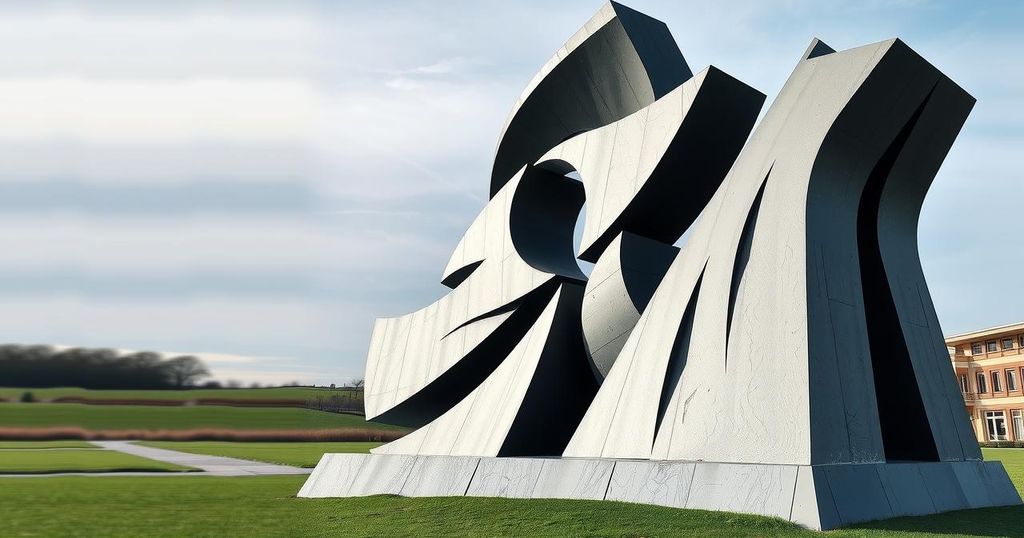Reflections of Exiled Sudanese Artists on Their Crippled Art Scene

Prominent Sudanese artists, such as Rashid Diab and Yasmeen Abdullah, articulate the impact of the ongoing civil war on Sudan’s art scene, reflecting on loss and identity as they create in exile. The war has obliterated galleries and artwork, with thousands of pieces reported lost. Despite these challenges, artists demonstrate resilience, aiming to preserve Sudanese culture through their work and counter negative narratives abroad.
Rashid Diab, a prominent Sudanese painter and art historian, engages in a video conversation from Madrid with his son, Yafil Mubarak, contemplating Sudan’s artistic heritage amidst their two-year exile. Diab remarks, “Those who came and destroyed everything in our country—they’re not Sudanese,” highlighting the cultural disruption caused by war, while collectively they ponder the preservation of authentic Sudanese identity through art.
The civil war that erupted in April 2023 has devastated Sudan’s burgeoning art scene, previously marked by the activation of galleries and community centers in Khartoum. Important endeavors, including discussions about establishing a National Museum of Art, have now been obliterated or left in disrepair, with significant artistic heritage at risk.
The Downtown Gallery, a key player founded in 2019, witnessed the loss of 60 to 80 paintings when the war commenced, contributing to what founder Rahiem Shadad estimates as thousands of artworks lost nationwide. The destruction of elder artists’ works, particularly those lacking any digital records, exacerbates the cultural loss. Initiatives like the Sudan Art Archive aim to counteract this erasure by digitally preserving Sudanese art.
Displacement has affected more than 12.5 million Sudanese, with artists like Yasmeen Abdullah, who fled while pregnant, attempting to sustain their practices from abroad. Abdullah continues to create art inspired by the poetry of Mahmoud Darwish, infusing her paintings with profound emotional resonance as a way to document the resilience and narrative of her people.
Ala Kheir, a photographer and founder of The Other Vision, emphasizes the discrepancy between authentic Sudanese experiences and media portrayals, acknowledging his evolving role as a documentarian amidst the ruins of his homeland. His commitment to conveying human stories contrasts starkly with the predominant narratives of conflict and despair.
Diab ponders the implications of creating Sudanese art outside the homeland, insisting that his essence remains tied to Khartoum, despite the war’s destruction of his cultural center. This sentiment resonates with other Sudanese artists, such as Yasmin Elnour, who explore identity in their work through personal histories of displacement and loss.
In the face of ongoing adversity, exiled Sudanese artists assert their identities through creativity. Mubarak articulates a shared conviction among artists: “We can preserve and present Sudan as ambassadors.” This resilience reinforces that Sudan represents a rich tapestry of culture beyond the backdrop of conflict and violence, embodying thinkers, creators, and philosophies deserving recognition.
The ongoing civil war in Sudan has caused significant damage to the country’s art scene, compelling prominent artists to operate in exile. As they navigate loss and longing, figures like Rashid Diab, Yasmeen Abdullah, and Ala Kheir strive to preserve their cultural narratives. Through their artistic endeavors, they redefine Sudan’s identity and showcase its rich heritage, challenging the notion that the nation is solely defined by its conflict.
Original Source: www.artnews.com








